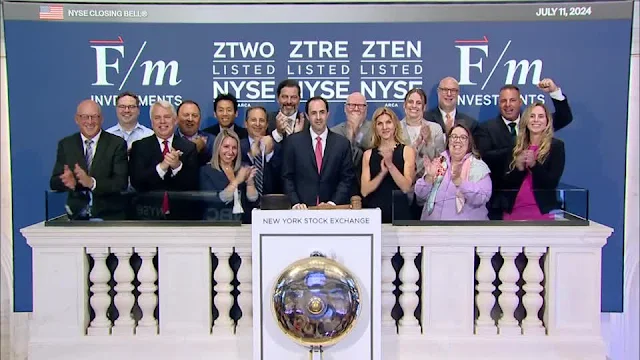Nasdaq Ends Sharply Lower as Investors Rotate into Smaller Companies
On Thursday, July 11, the Nasdaq experienced a significant decline, driven by losses in major tech companies like Nvidia, Apple, and Tesla. This shift occurred as investors moved their focus to smaller companies following softer-than-expected inflation data, which increased speculation that the Federal Reserve may cut interest rates in September.
Market Performance Overview
Nasdaq Composite Takes a Hit
The Nasdaq Composite dropped by 364.04 points, or 1.95%, closing at 18,283.41. This sharp decline was primarily influenced by the underperformance of high-profile tech stocks, which had been major drivers of market growth in recent years.
S&P 500 and Dow Jones Industrial Average
The S&P 500 also saw a decrease, losing 49.37 points, or 0.88%, to end at 5,584.54. In contrast, the Dow Jones Industrial Average managed to eke out a slight gain, rising by 32.39 points, or 0.08%, to finish at 39,753.75. This divergence highlights the varying impacts of the current economic data on different segments of the market.
Factors Influencing Market Movements
Inflation Data and Federal Reserve Rate Cut Speculation
The latest inflation data came in softer than expected, leading investors to speculate that the Federal Reserve might cut interest rates in September. This anticipation of lower rates typically encourages a shift in investment strategy, prompting a rotation out of high-growth tech stocks and into smaller, potentially undervalued companies.
Tech Giants Under Pressure
Nvidia, Apple, and Tesla, which have been key players in the tech sector's bull run, faced significant selling pressure. Investors appear to be reassessing the valuations of these tech giants in light of the potential for a more dovish Federal Reserve policy.
Detailed Market Analysis
Impact on Major Indices
- Nasdaq Composite: The steep decline in the Nasdaq Composite reflects the broader market's reaction to shifting economic expectations. High-growth tech stocks, which are heavily weighted in this index, bore the brunt of the sell-off.
- S&P 500: The S&P 500's decline, while less severe than the Nasdaq's, indicates that the negative sentiment extended beyond tech to other sectors, though not uniformly.
- Dow Jones Industrial Average: The modest gain in the Dow Jones suggests that some investors sought safety in more traditional, blue-chip stocks, which are perceived as less volatile in times of economic uncertainty.
Sector Performance
The technology sector was the hardest hit, with significant losses in major stocks like Nvidia, Apple, and Tesla. Other sectors, including financials and industrials, experienced mixed performance, reflecting broader economic concerns and investor caution.
Investor Sentiment and Market Rotation
Shift to Smaller Companies
The rotation into smaller companies suggests that investors are looking for opportunities in areas that may benefit from a more favorable interest rate environment. Small-cap stocks often perform well when borrowing costs are lower, as they typically have greater sensitivity to changes in economic conditions.
Reassessment of Tech Valuations
The pressure on tech stocks indicates a reassessment of their high valuations. With the potential for lower interest rates, the discount rates applied to future earnings of these companies may change, leading to a recalibration of their stock prices.
Future Outlook and Considerations
Federal Reserve's Next Moves
The market's focus will remain on the Federal Reserve's upcoming decisions. Any further indications of a rate cut could continue to drive rotation and influence market dynamics. Investors will closely watch economic data releases and Fed statements for clues.
Earnings Season
With the second-quarter earnings season underway, upcoming reports from major companies will provide further insights into the health of various sectors. Positive or negative surprises could significantly impact market sentiment and direction.
Global Economic Factors
Broader global economic conditions, including trade tensions, geopolitical developments, and international growth rates, will also play crucial roles in shaping market movements. Investors should remain vigilant and adaptable to these external influences.
Frequently Asked Questions (FAQs)
What caused the Nasdaq to drop significantly on July 11?
The Nasdaq dropped significantly due to losses in major tech stocks like Nvidia, Apple, and Tesla. This decline was driven by investor rotation into smaller companies following softer-than-expected inflation data, which increased speculation that the Federal Reserve may cut interest rates in September.
Why did the S&P 500 and Nasdaq decline while the Dow Jones rose?
The S&P 500 and Nasdaq declined primarily due to the underperformance of high-growth tech stocks. In contrast, the Dow Jones, which includes more traditional blue-chip stocks, saw a slight gain as investors sought safety in less volatile investments amid economic uncertainty.
What is the significance of the latest inflation data?
The latest inflation data came in softer than expected, leading to increased speculation that the Federal Reserve might cut interest rates in September. This potential rate cut has influenced investor behavior, prompting a rotation out of high-growth tech stocks and into smaller companies.
How does a potential Federal Reserve rate cut impact the stock market?
A potential Federal Reserve rate cut typically lowers borrowing costs, which can stimulate economic growth. This prospect often leads investors to shift their focus to smaller, potentially undervalued companies that may benefit more from lower interest rates.
What should investors watch for in the coming months?
Investors should closely monitor Federal Reserve announcements, upcoming earnings reports from major companies, and global economic conditions. These factors will provide crucial insights into market direction and help inform investment strategies.
Conclusion
The unexpected drop in U.S. inflation has had a profound impact on the Nasdaq and broader stock markets. As investors adjust their positions in anticipation of potential Federal Reserve rate cuts, the market dynamics are shifting, with significant implications for tech stocks and smaller companies. Staying informed and adaptable will be key for navigating these uncertain times.






